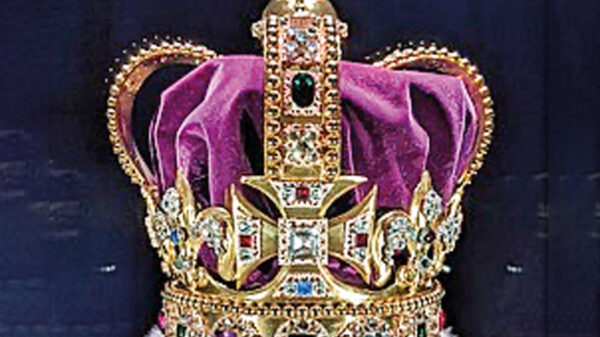Clifford’s Tower is one of the main landmarks in York and is the largest part remaining of York Castle. The stone tower you see today is from the 13th century, but there was an earlier timber tower that burned down in 1190 when around 150 Jews from York committed mass suicide after being besieged there by a mob. Tensions between Christians and Jews had been increasing during this time as many people were in debt to Jewish moneylenders. Anti-Jewish riots occurred in several cities as an unfounded rumour was put about shortly after the coronation of King Richard I that he had ordered a massacre of the Jews.The tower was quickly rebuilt following the blaze, but in the middle of the 13th century King Henry III ordered a completely new stone tower to be built as war with Scotland drew closer. The tower was built by Master Mason Henry of Reyns – the same master mason who was responsible for Westminster Abbey. Contemporary sources suggest that the tower was not finished until possibly as late as the 1290’s as building was intermittent.
Despite the importance of York, the castle here was mainly used for imprisonment and storage. In the early 1300’s, the Knights Templar in England were arrested under false accusations including heresy amongst other charges. The Templars in Yorkshire were taken to York Castle and held there while they were questioned by the Pope’s officials in the Chapter House of York Minster. At first they were allowed out during the day until March 1310 when the King sent orders to keep them securely locked up.
Not a great deal is known about the tower during the 15th and 16th centuries, but we do know that in 1596-7 there was a public outcry when the gaoler Robert Redhead was accused by the aldermen of York of trying to demolish the tower in order to sell the stone for lime building. Correspondence about these events are when the name Clifford’s Tower is first recorded. There are a couple of suggestions into how the tower got this name. One is that the Clifford family claimed the post of constable here to be hereditary, another is that it may refer to Roger de Clifford – a rebel who was executed in 1322 after the Battle of Boroughbridge. His body was displayed on a gibbet at York Castle.
Clifford’s Tower was occupied by a Royal garrison during the English Civil War. It was repaired and storage rooms were created for ammunition and a gun platform was built on the roof. York fell to the Parliamentarians in 1644.
In the early 19th century the castle was redeveloped as a prison and Clifford’s Tower was practically hidden from view, until 1915 when it was taken into state guardianship. It was repaired and the prison buildings were demolished in 1935, improving public access.
Today, run by English Heritage, the tower is just a shell but it is still well worth a climb up the stairs to see what does remain. It also affords fantastic panoramic views over the city of York and beyond.







